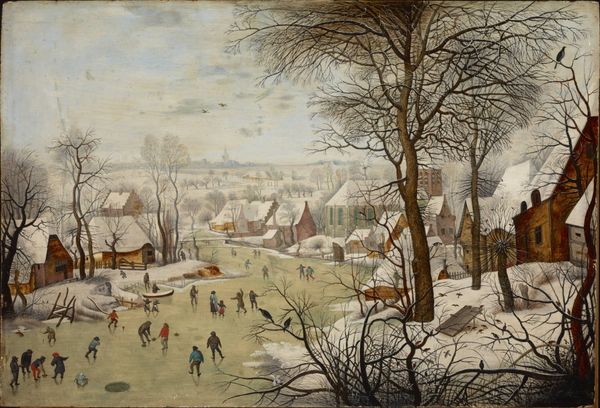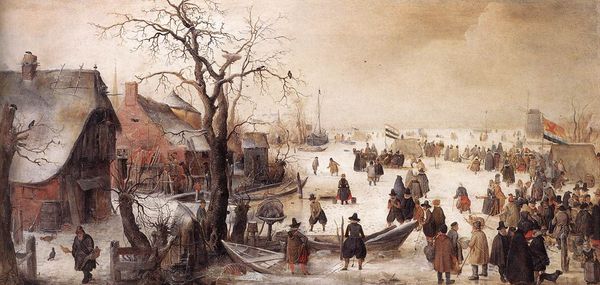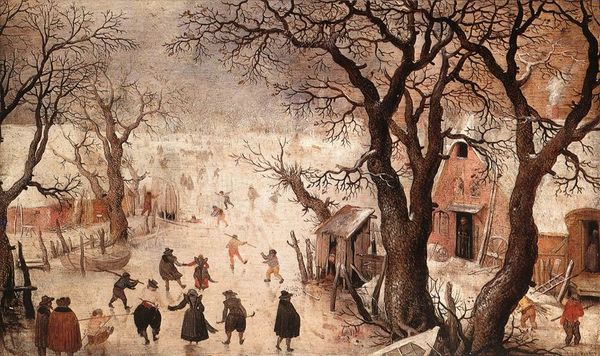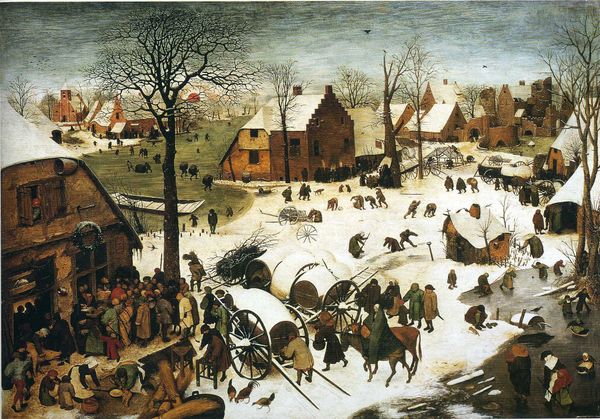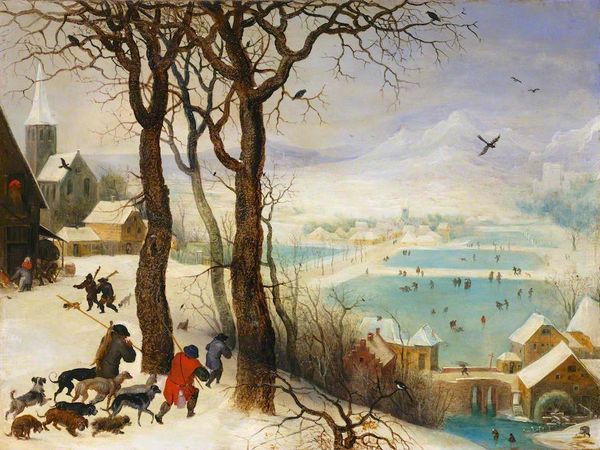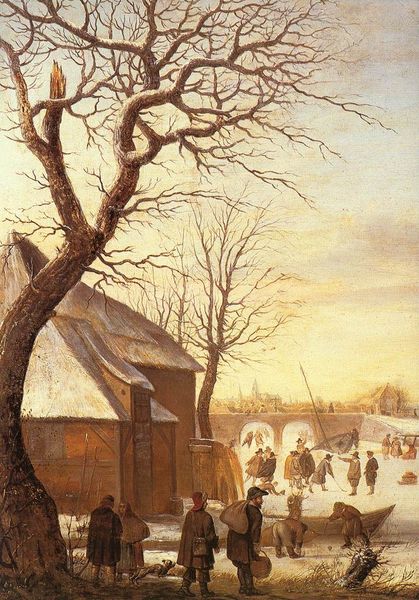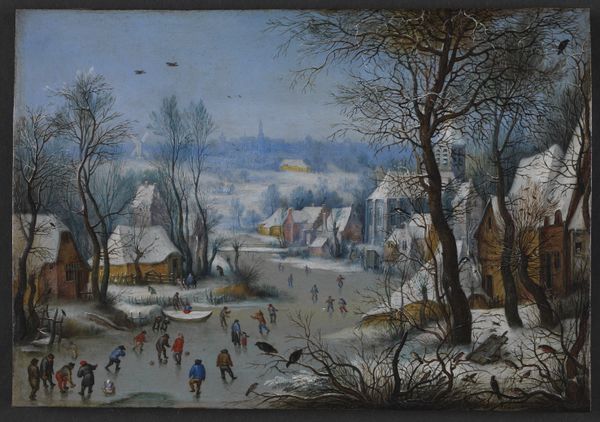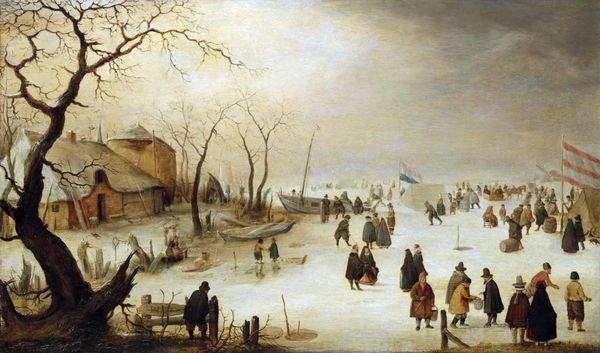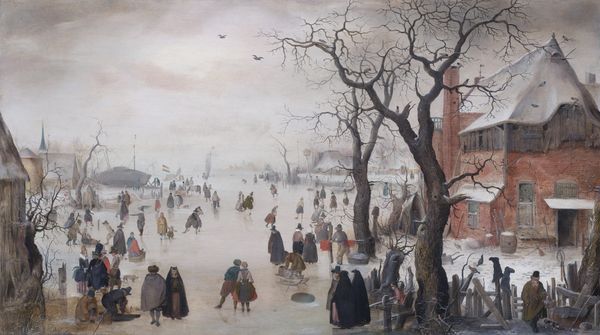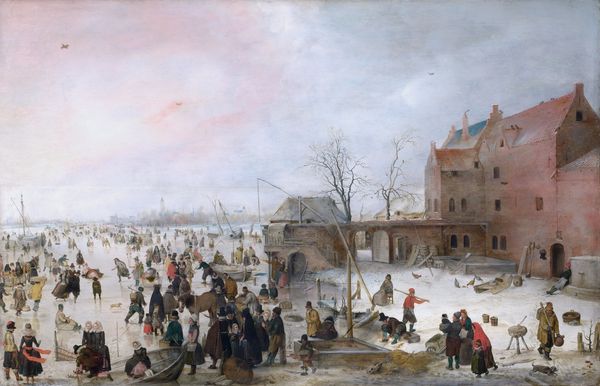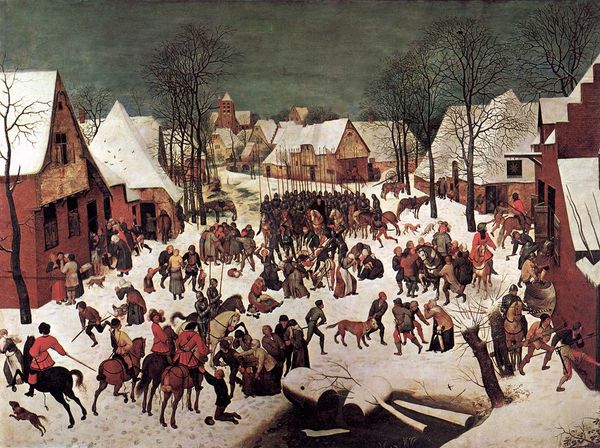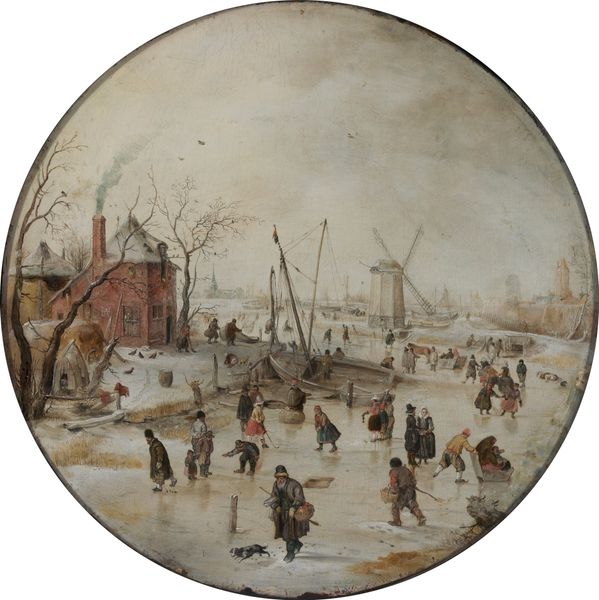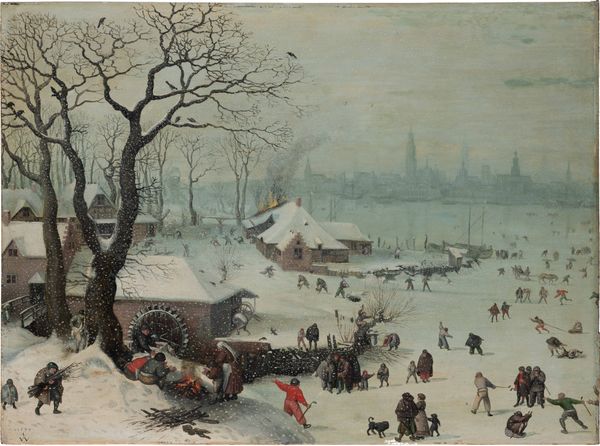
oil-paint
#
tree
#
snow
#
oil-paint
#
landscape
#
winter
#
river
#
house
#
oil painting
#
flemish
#
water
#
cityscape
#
genre-painting
#
realism
Dimensions: 37 x 55 cm
Copyright: Public domain
Editor: Here we have Pieter Bruegel the Elder’s "Winter Landscape with Skaters and a Bird Trap" from 1565, rendered in oil paint. There’s such a captivating juxtaposition here – the warmth of the communal activity set against the biting cold suggested by the muted palette and barren trees. How would you interpret Bruegel’s choices in terms of visual structure? Curator: Bruegel's manipulation of form in this painting presents a fascinating case. Observe the diagonal sweep leading the eye from the lower left to the upper right, drawing us into the composition. How does this affect your reading of the relationship between foreground and background? Editor: Well, the figures in the foreground, engaging in their winter activities, feel very immediate and tangible. Yet, that diagonal line also directs my gaze to the more distant, ethereal landscape. Curator: Precisely. This arrangement diminishes any distinction between primary subject and background elements, creating a cohesive and, dare I say, democratic visual space. The painting denies hierarchical significance. Note also the subtle interplay of geometric shapes. Do you notice how the rectangular forms of the houses contrast with the more organic shapes of the figures and trees? Editor: Yes, I see that now! The houses are quite angular, especially against the fluidity of the frozen river and the skaters moving across it. It is quite effective, providing a sense of grounding and stability against the movement of the figures and chaos of the bare branches. Curator: Exactly. The formal elements such as line, shape and color demonstrate an effort in Bruegel's artistic consciousness. We can think of how he carefully deployed these compositional strategies to convey his ideas about humanity’s place in the cosmos. Editor: I appreciate that the interplay of shape and the careful arrangement of the composition itself offer deeper ways of interpretation! Curator: Indeed, understanding the structural components allows for diverse perspectives to form beyond cultural narratives and subject matter.
Comments
No comments
Be the first to comment and join the conversation on the ultimate creative platform.
